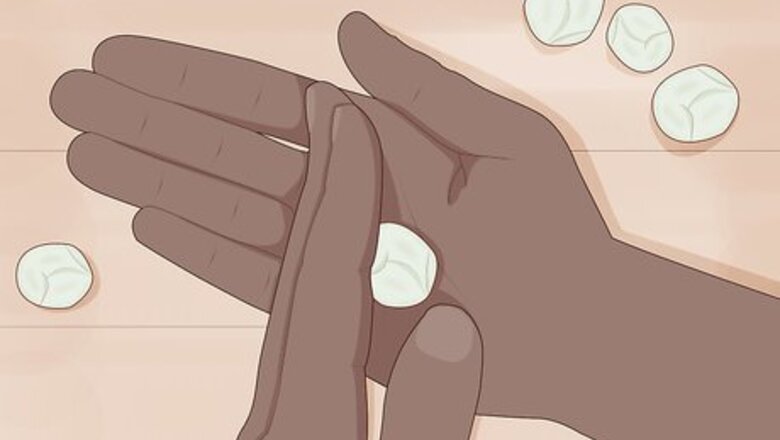
views
Which type of polymer clay should I use?
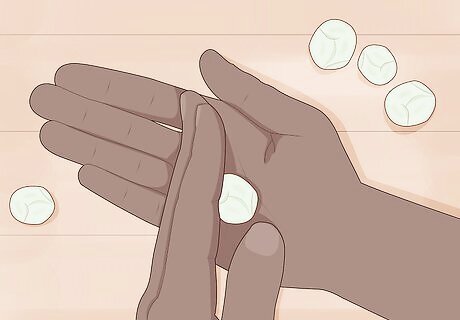
Choose a high quality, durable polymer clay. Not all polymer clays are suitable for making jewelry. You need a clay that’s soft enough for you to work with your hands but firm enough to hold the details of your earring designs. Here are some polymer clays that are often recommended for jewelry-making: Sculpey Premo: This clay has a firm texture that holds details well. It’s strong and flexible, and there are a lot of bright colors to choose from. Sculpey Souffle: This clay is lightweight, soft, and easy to work with your hands. It has a soft, matte finish after baking and hides fingerprints well. Avoid clays like Sculpey III, Sculpey Bake Shop, and Fimo as these are often too soft to work with and/or break easily after baking. Any cheap, unbranded clays on sites like Amazon should be avoided as well. It may also be beneficial to choose a firmer clay for the background/base of your earrings and a softer, more moldable type for any design elements.
Conditioning & Mixing Your Clay

Cover your workspace and wipe it down. While polymer clay is very safe to work with, it can stain your work surfaces. Protect your table or other workspace by working on top of a sheet of parchment or wax paper, a piece of glass, or a ceramic tile. Then, wipe down your work surface, tools, and hands with a baby wipe before molding your clay to prevent it from collecting lint or dust. If you don’t have parchment paper, use a metal baking sheet, or even a taped-down piece of printer paper. Some tools you may need include an acrylic rolling pin, clay cutters or cookie cutters, and an X-Acto knife or clay slicer.
Condition the clay by kneading it with your hands or a rolling pin. Conditioning is the process of kneading the clay to make it softer, more flexible, and easy to shape. There are a few different ways you can condition polymer clay: knead it with your hands by folding, rolling, and squishing it until it softens, or roll it with an acrylic rolling pin until it’s warm, bendable, and slightly shiny. You can also roll the clay through a pasta machine. Flatten it with your hands first, then roll it through the machine on the thickest setting. You may have to do this several times before it’s properly conditioned. Gradually decrease the thickness setting as the clay softens. If you’re having trouble conditioning your clay, craft expert Sarah Stearns suggests “chopping it up into small pieces first” and continuing to knead it with your hands. If you’re conditioning multiple colors, wipe your hands with a baby wipe between colors to prevent color mixing. The clay is well-conditioned when you can roll out and bend a long coil without cracks or rough edges forming. Make sure you don’t trap air bubbles in the clay as you condition it. If you’re using a pasta machine or rolling pin, fold the clay in half between each pass to help push the air bubbles out. If you do find air bubbles, pop them with a needle or craft knife.
Mix your clay colors, if necessary. Depending on the designs you want to make and the colors of clay you have, you may need to mix different clays together to create the color you need. To do this, simply take a bit of each color and knead the clays together until they create one uniform color. If you have a color recipe (for example, 5 parts blue, 1 part yellow), set aside the correct amounts of each color, then knead them together until the colors are fully combined. If you don’t have a color recipe, experiment by mixing different amounts of different colors until you find a combo you like.
Designing Your Polymer Clay Earrings
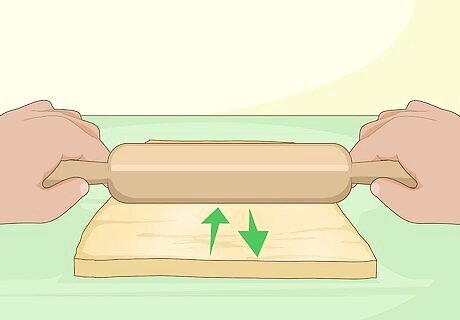
Roll out your clay so it’s about ⁄8 inch (3.2 mm) thick. In general, you don’t want your polymer clay earrings to be too thick or they may have trouble baking or be too heavy to wear. While you can flatten your clay with your hands, it’s easier to roll it out with an acrylic rolling pin. Plus, you won’t have to worry about removing as many fingerprints. If necessary, use a ruler to make sure the clay is the appropriate thickness all throughout. You’ll want to roll out your base color (the background of your earrings), as well as any colors you plan on using for design elements. Depending on your design, you might not need to worry about rolling your design element clay to a certain thickness; usually, the designs and patterns are flattened into the base color. If you want texture, however, you can adjust the thickness as needed.
Create and place your designs or patterns. Set your base color aside and carve your designs into a different color clay using an X-Acto knife or other craft knife. Use the knife to cut them out and lightly press them into the base clay with your finger. This will create a unique pattern on your earrings when you cut them out. For example, if you want your earrings to have little hearts, first roll out the color you want the background to be. Roll out a different color clay for the hearts and cut several of them out with your knife. Press them into the base color so you don’t have to try to add them once you’ve cut the earrings to shape. While it may be possible to add designs and patterns after you’ve cut the earrings out, the clay may become misshapen when you press the designs in. It’s much easier to add designs beforehand so you don’t have to start over.
Cut and shape the clay. After you’ve created your design, there are a few different ways you can cut out your earring shapes. The easiest way is to use pre-made clay cutters or mini cookie cutters. You can also create your own shapes by cutting them out on cardstock, then tracing around them with an X-Acto knife or a craft knife. Or, use household objects like small measuring cups to create a perfectly rounded shape. If you notice a jagged edge after you sculpt your shapes, smooth it out with your finger or cut the edges with a sharp polymer clay cutter. You can also sand off jagged edges after baking the clay.
Poke holes to attach the jewelry pieces. Before you bake your clay, use a blunt tapestry needle, a toothpick, or even a paper clip to poke a hole where you want your jump rings or earring backs to go. In general, this will be at the top of your design close to the edge. Make sure the holes are large enough to properly insert the jewelry components. If you do forget to poke the holes before baking, don’t worry. You can drill them in afterwards.
Baking Your Earrings
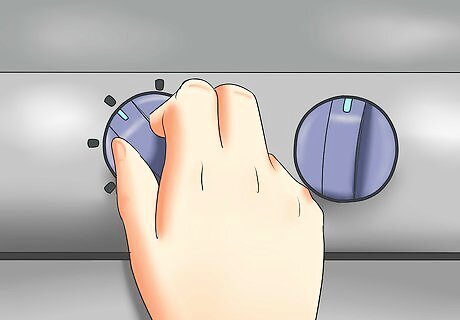
Preheat the oven to 275° Fahrenheit and bake for 30 minutes. Follow the instructions on your clay’s packaging to know exactly what temperature to use, but in general, polymer clay bakes at 275° Fahrenheit. Place the earrings on a baking sheet lined with cardstock or printer paper and bake for 30 minutes to an hour depending on the thickness of the clay. You don’t need a special oven to bake polymer clay. Use your regular home oven or even a toaster oven (if it doesn’t have hot spots). However, you should never attempt to bake polymer clay in a microwave. Many home ovens run hot or cold, so use an oven thermometer to ensure the temperature is accurate. Adjust the temperature as needed. Cover the earrings with aluminum foil to prevent browning or other discoloration. In general, you’ll bake for 30 minutes for each ⁄4 inch (6.4 mm) of thickness. For most earrings, 30 minutes will be enough time.
Allow the earrings to cool and test their flexibility. The earrings should be flexible when you pull them out of the oven. Allow them to cool at room temperature, then bend them with your fingers. If they are cured properly, they’ll bend and bounce back to their original shape without cracking or breaking. If the earrings do crack or break, there’s a chance they were underbaked. When you try again, make sure to test your oven’s temperature and bake for a few minutes longer than you did the first time.
Sanding & Finishing Your Earrings

Use a Dremel to sand and smooth your earrings. Your earrings’ edges may be a bit sharp after baking. If you only need to smooth one pair, you can rub them with fine-grit sandpaper, and if you need to sand multiple pairs, use a Dremel to speed up the process. If you forgot to add holes to your earrings, you can also use the Dremel to drill them in. If you only need to smooth the surface of your clay, tip a cotton swab in acetone to rub away any fingerprints. To drill holes in the earrings, use a tiny drill bit and slowly lower the Dremel tool onto the surface of the earring. Place the earrings on an empty box while drilling to protect any work surfaces.
Attach earring backs and jump rings. Depending on the style of earrings you’re making, you may need to add jump rings or just the earring posts and backs. Dab a bit of flexible gel superglue onto the back of the earring to attach the post. To add jump rings, use jewelry pliers to open the jump ring, loop it through the hole in your earring, then twist it closed. Once the jewelry components have been secured, you’re ready to wear your new earrings! For stud earrings, you’ll only use earring posts and backs. For dangling earrings, you’ll use an ear hook and a jump ring. You can also make tiered earrings by attaching multiple clay shapes to each other with jump rings. For extra support, try placing the earring post on the back of the earring before you bake it. Encase the post with another thin layer of clay to secure it, then bake the clay with the posts attached. Once the clay is cured, it will harden and the metal won’t fall out.
Polymer Clay Earring Design Ideas
Rainbow arch earrings Use your fingertips to apply gentle pressure and roll 3 thin ropes of clay. Bend each rope into a narrow arch shape, then gently press them together to make sure they’re attached to each other and form the shape of a rainbow. Make sure the ends line up and trim the bottoms of the arch if necessary. Each piece should be made of a different color clay to get the rainbow effect, though you can create a monochrome arch, as well. If you struggle to roll the ropes, use a clay extruder to create perfectly even coils. Make sure you use the same size coils for both earrings.
Floral slab earrings Knead a large ball of clay for the background color, then roll it flat to about ⁄8 inch (3.2 mm) thick. Choose other clay colors for your flower petals and leaves and use cutters or a craft knife to cut out the shapes. Arrange the pieces onto the background to form the pattern, then gently pat them with your fingers to attach them. Run a rolling pin over the whole slab of clay to flatten it, then cut out your desired earring shapes. You can also create a terrazzo pattern the same way. Instead of forming shapes that resemble flowers or leaves, cut out more jagged, geometric shapes. Then attach them to the background the same way you would for the floral pattern.
Monochrome textured earrings Roll out a slab of clay in a color of your choice. Then, cut out your earring pieces—try one smaller and one larger circle for each earring. Use a texture tool to lightly carve radiating lines into the clay’s surface. Be careful not to press too hard, as this can create weak spots that might crack after baking. You can also carve other shapes or patterns into the clay using a texture tool. Try curvy lines, spirals, or even stars. If you don’t have an official clay texture tool, you can also use household items like screwdrivers or toothpicks to add texture.
Abstract landscape earrings Condition a few small balls of clay in coordinating colors (for example, different shades of orange). Shape the balls into coils and arrange the colors however you want, like darkest to lightest. Lightly press them together, then use a rolling pin to flatten the coils into a slab. The colors should blend together in a way that resembles a landscape or a sunset. Then, cut the earrings into your desired shape.
Marbled earrings For this design, you’ll mix a variety of colors, so this is a great opportunity to use up any scraps you have left over from other projects. Condition each color and shape them into coils. Twist all the coils together into a ball and fold the clay until you see a pattern you like. Then, roll the ball flat and cut out your desired earring shapes.
Watercolor earrings For this design, you’ll need black and white clay, translucent clay, and acrylic paint. Roll out the black clay so it’s very thin and layer a thin piece of white over the top. Use acrylic paint in a color of your choice to make strokes over the white surface. Allow it to dry, then roll the translucent clay as thinly as possible and lay it over the painted slab. Roll everything together, then tear the pieces apart and create a new slab of torn pieces. Cut out your desired earring shapes.
Making Polymer Clay Earring FAQs
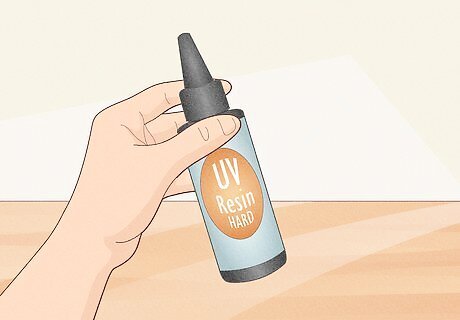
Do I need to seal the clay with a clear coat? No, you don’t need to seal the clay unless you’re using paint. However, if you want to give your earrings a shiny look, add a coat of UV resin or polycrylic. If you prefer a matte look, don’t use a sealer.
What is the best glue for polymer clay? It depends on what types of material you’re trying to attach. Liquid polymer clay, like Sculpey Oven Bake Clay Adhesive, is the strongest “glue” for attaching polymer clay to polymer clay. If you’re attaching the clay to metal, flexible gel superglues work well. In general, however, the best way to attach polymer clay to metal jewelry is to surround or bury the metal in a small slice of polymer clay to create a mechanical attachment. When the clay cures and hardens, it will physically hold the metal in place.
Why do my earrings look burnt? Your oven temperature may be too high if your earrings appear burnt or discolored. Try lowering the temperature for the next batch or covering the clay pieces with a foil tent while baking to keep them from browning. It also helps to check on your earrings every 5 to 10 minutes to make sure they don’t burn.
How do I get rid of fingerprints and fuzz? Always make sure your hands and workspace are clean when working with the clay, and wipe down your tools and table with a baby wipe. Check the earrings for dirt or fingernail marks before baking, as it will be easier to fix mistakes while the clay is still soft. If you notice marks after baking, dip a q-tip in acetone or rubbing alcohol to rub away the imperfections. Try to avoid using cheap, unbranded clay, like the kind that comes in a 50-pack online. These clays are usually very mushy and attract dirt more easily than higher quality clays.

My earrings are brittle and keep breaking—why? Your clay might not have been properly conditioned before baking. If it was conditioned properly, it’s probably underbaked. Underbaked polymer clay tends to be brittle and is more likely to snap or chip with heavy use than fully baked clay. There’s also a chance the brand of clay you used is naturally brittle. Sculpey III and Bakeshop are two brands known to be brittle.














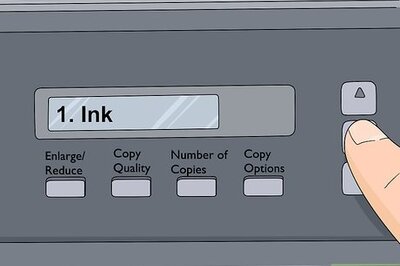



Comments
0 comment